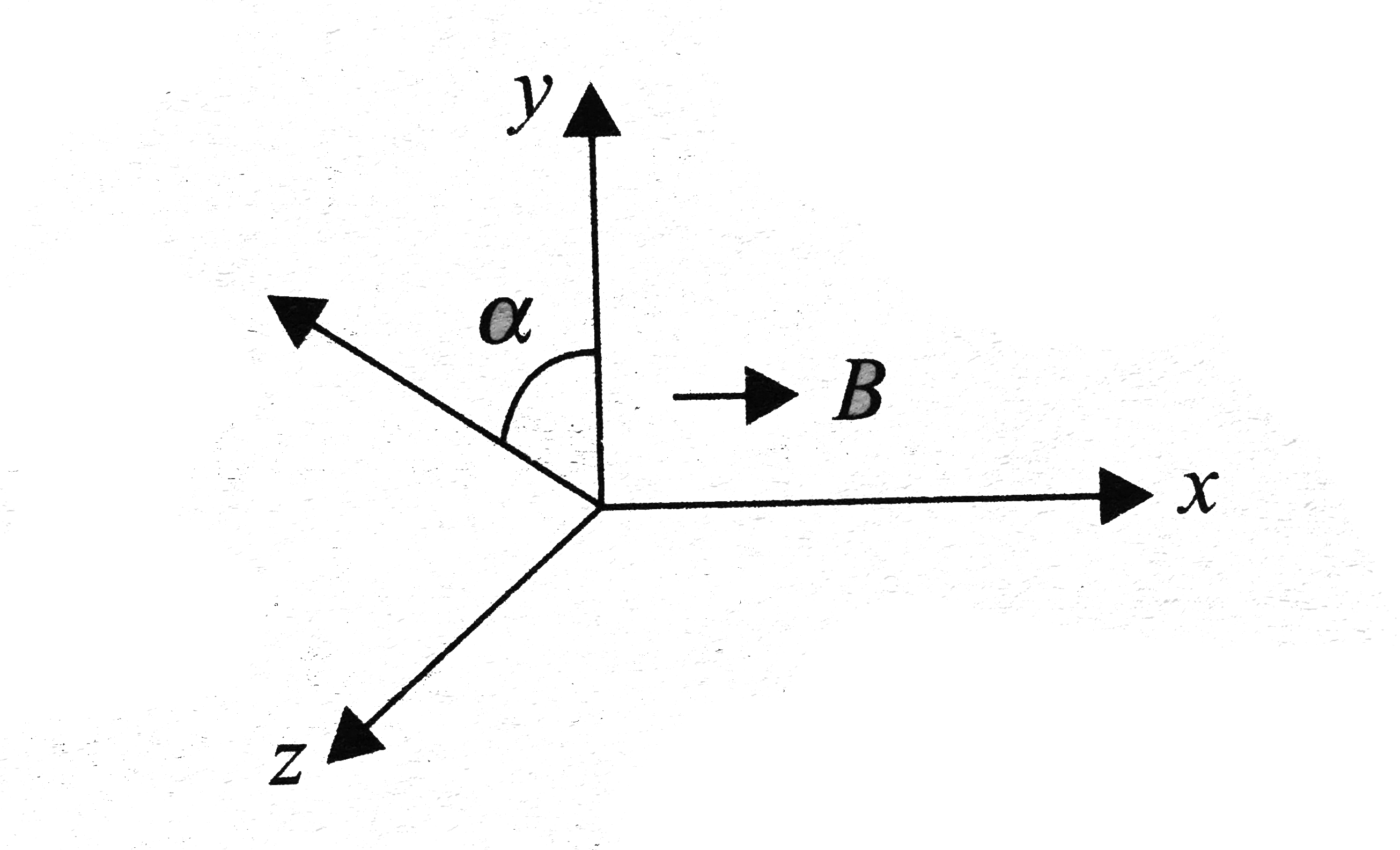Can a time independent magnetic field set into motion an electron initially at rest? Why or why not?
To determine whether a time-independent magnetic field can set an electron initially at rest into motion, we can analyze the situation step by step.
1. Understanding the Initial Conditions:
- We start with an electron that is initially at rest. This means that its initial velocity v=0.
2. Magnetic Force on a Moving Charge:
- The magnetic force F acting on a charged particle moving in a magnetic field is given by the equation:
F=q(v×B)
where q is the charge of the particle, v is its velocity, and B is the magnetic field.
3. Substituting Initial Conditions:
- Since the electron is initially at rest, we substitute v=0 into the equation for magnetic force:
F=q(0×B)=0
- This means that the magnetic force F acting on the electron is zero.
4. Implications of Zero Force:
- According to Newton's second law, if the net force acting on an object is zero, then the object will not accelerate:
F=m⋅a⟹a=Fm=0m=0
- Since the electron does not experience any force, it will not accelerate and thus will not gain any velocity.
5. Conclusion:
- Therefore, a time-independent magnetic field cannot set an electron that is initially at rest into motion. The absence of force due to the zero velocity means that the electron will remain stationary.
Final Answer:
No, a time-independent magnetic field cannot set an electron initially at rest into motion because the magnetic force acting on it is zero when the velocity is zero.
---
- We start with an electron that is initially at rest. This means that its initial velocity v=0.
- The magnetic force F acting on a charged particle moving in a magnetic field is given by the equation:
F=q(v×B)
where q is the charge of the particle, v is its velocity, and B is the magnetic field.
- Since the electron is initially at rest, we substitute v=0 into the equation for magnetic force:
F=q(0×B)=0
- This means that the magnetic force F acting on the electron is zero.
- According to Newton's second law, if the net force acting on an object is zero, then the object will not accelerate:
F=m⋅a⟹a=Fm=0m=0
- Since the electron does not experience any force, it will not accelerate and thus will not gain any velocity.
- Therefore, a time-independent magnetic field cannot set an electron that is initially at rest into motion. The absence of force due to the zero velocity means that the electron will remain stationary.
No, a time-independent magnetic field cannot set an electron initially at rest into motion because the magnetic force acting on it is zero when the velocity is zero.
Topper's Solved these Questions
- MOVING CHARGES AND MAGNETISMBook:MODERN PUBLICATIONChapter:MOVING CHARGES AND MAGNETISMExercise:Tough & Tricky (PROBLEMS )
Explore 15 Videos
- MOVING CHARGES AND MAGNETISMBook:MODERN PUBLICATIONChapter:MOVING CHARGES AND MAGNETISMExercise:NCERT FILE (NCERT Textbook Exercises)
Explore 13 Videos
- MOVING CHARGES AND MAGNETISMBook:MODERN PUBLICATIONChapter:MOVING CHARGES AND MAGNETISMExercise:PRACTICE PROBLEMS
Explore 59 Videos
- MAGNETISM AND MATTERBook:MODERN PUBLICATIONChapter:MAGNETISM AND MATTERExercise:CHAPTER PRACTICE TEST FOR BOARD EXAMINATION
Explore 16 Videos
- NUCLEIBook:MODERN PUBLICATIONChapter:NUCLEIExercise:CHAPTER PRACTICE TEST FOR BOARD EXAMINATION
Explore 15 Videos
Similar Questions
Knowledge Check
If He+ ion undergoes transition n=2 → 1 the ratio of final to initial magnetic field due to motion of electron at the nucleus will
A32:1B1:32C16:1D1:16In a region of space, a uniform magnetic field B exists in the x-direction. An electron is fired from the origin with its initial velocity u making an angle α with the y direction in the y-z plane. In the subsequent motion of the electron,
 Ay-coordinate of the electron will never be negativeBz-coordinate of the electron will never be negativeCx-coordinate of the electron will never be negativeDtrajectory of the electron would be helical
Ay-coordinate of the electron will never be negativeBz-coordinate of the electron will never be negativeCx-coordinate of the electron will never be negativeDtrajectory of the electron would be helicalA charged particle enters a magnetic field such that the direction of initial velocity are different from the direction of the field. Which of the following characteristics of the particle change with time ?
(i) momentum
(ii) K.E.
(iii) acceleration
(iv) direction of motionA(i), (ii)B(ii), (iv)C(ii), (iii)D(i), (iii), (iv)
Why don't two magnetic field lines intersect each other?
View SolutionA monoenergetic (18 keV) electron beam initially in the horizontal direction is subjected to a horizontal magnetic field of 0.04 G normal to the initial direction. Estimate the up or down deflection of the beam over a distance of 30 cm (me =9.11×10–31kg). [Note: Data in this exercise are so chosen that the answer will give you an idea of the effect of earth’s magnetic field on the motion of the electron beam from the electron gun to the screen in a TV set.]
View SolutionThe magnetic fieold at the centre of a hydrogen atom due to the motion of the electron in the first Bohr orbit is B . The magnetic field at the centre due to the motion of the electron in the second Bohr orbit will be B2xFind value of x.
View SolutionCan two independent source of light be coherent? Why ?
View SolutionNo two magnetic lines of force can intersect. Why?
View Solution